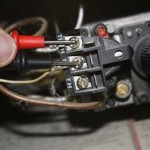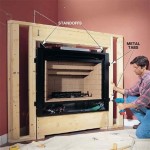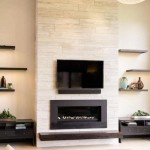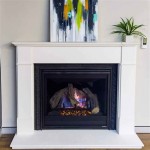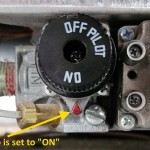Wall Gas Fireplace Ventless: A Comprehensive Guide
Wall gas fireplaces, particularly ventless models, offer an alternative to traditional wood-burning fireplaces, providing heat and ambiance without the need for a chimney or extensive ductwork. These units are designed to be mounted directly on a wall, making them a convenient option for homeowners seeking to add a fireplace to existing spaces or new construction projects. Understanding the functionality, advantages, disadvantages, and safety considerations of ventless wall gas fireplaces is crucial for making an informed decision.
Understanding Ventless Technology
Ventless, also known as vent-free, gas fireplaces operate by burning natural gas or propane in a highly efficient manner. The key feature is the oxygen depletion sensor (ODS), a safety device that monitors the oxygen levels in the room. If the oxygen level drops below a safe threshold, indicating a potential build-up of carbon monoxide, the ODS will automatically shut off the gas supply, preventing carbon monoxide poisoning. This system allows the fireplace to operate without the need for venting to the outside, making installation relatively straightforward. The assumption with ventless technology is that the appliance is used in a well-ventilated space according to the manufacturer's instructions.
The combustion process in a ventless fireplace aims for near-complete combustion. This means that the gas is burned with a high degree of efficiency, minimizing the production of harmful byproducts. However, even with highly efficient combustion, some byproducts, such as water vapor and small amounts of carbon dioxide, are released into the room. Therefore, proper room size and ventilation are essential to ensure safe operation. Manufacturers specify minimum room sizes for their units, and it is critical to adhere to these guidelines.
The heat generated by a ventless gas fireplace is typically radiant heat, meaning it directly warms objects and people in the room. This differs from forced-air heating systems, which heat the air itself. Radiant heat is often perceived as more comfortable and efficient because it doesn't rely on circulating air, which can lead to drafts and uneven temperature distribution. However, radiant heat dissipates quickly, so it's most effective in smaller, enclosed spaces.
Advantages of Wall Gas Fireplace Ventless Models
One of the primary advantages of a wall gas fireplace ventless is ease of installation. Because they do not require venting, these fireplaces can be installed in almost any room of a house, apartment, or condo. This eliminates the cost and complexity associated with building a chimney or running vent pipes, potentially saving homeowners significant money and time. The installation typically involves securing the unit to the wall, connecting it to a gas supply (either natural gas or propane), and testing the operation. In many cases, a professional installer is recommended to ensure proper and safe setup.
Another benefit is the versatility in design. Wall gas fireplaces ventless come in a wide variety of styles, sizes, and finishes, allowing homeowners to choose a model that complements their existing decor. They can range from traditional designs that mimic the look of a wood-burning fireplace to modern, minimalist designs that feature clean lines and contemporary materials. This variety makes it possible to integrate a fireplace seamlessly into virtually any room aesthetic.
Energy efficiency is another key selling point. Ventless fireplaces are generally more energy-efficient than vented gas fireplaces because they don't lose heat up a chimney. Almost all of the heat produced is released into the room, maximizing the heating potential. This can translate to lower heating bills, particularly when the fireplace is used as a supplemental heating source. However, the actual energy savings will depend on factors such as the size of the room, the insulation of the house, and the frequency of use.
Additionally, wall gas fireplaces ventless offer convenience. They can be turned on and off with the flick of a switch or the press of a button on a remote control, eliminating the need to gather wood, build a fire, and clean up ashes. This ease of use makes them an attractive option for individuals who want the ambiance of a fireplace without the hassle of a traditional wood-burning unit. Many models also come with features such as adjustable flame height, thermostatic control, and timers, further enhancing convenience.
Disadvantages and Safety Considerations
Despite their advantages, ventless wall gas fireplaces also have some drawbacks that must be considered. The primary concern is the potential for indoor air quality issues. While the ODS system is designed to prevent carbon monoxide poisoning, it's crucial to understand that ventless fireplaces release small amounts of other byproducts into the room, including water vapor, nitrogen dioxide, and carbon dioxide. Excessive levels of these substances can lead to discomfort, headaches, and respiratory problems, especially in individuals with pre-existing respiratory conditions like asthma or COPD.
Therefore, proper ventilation is essential. While these fireplaces are called "ventless," they still require adequate airflow in the room. This typically means opening a window slightly or using a ceiling fan to circulate air. It's also important to ensure that the fireplace is not operated in a confined space, such as a small bedroom or bathroom, without adequate ventilation. Regularly monitoring the air quality in the room with a carbon monoxide detector is a crucial safety precaution.
Another consideration is the potential for moisture build-up. The water vapor released by a ventless fireplace can increase humidity levels in the room. In some cases, this can lead to condensation on windows and walls, which can promote the growth of mold and mildew. To mitigate this risk, it's important to control humidity levels in the home using dehumidifiers or ventilation systems. Regular inspection of the walls and windows for signs of moisture is also recommended.
Furthermore, ventless gas fireplaces may not be suitable for individuals with sensitivities to indoor air pollutants. The byproducts released by the fireplace, even in small amounts, can trigger allergic reactions or exacerbate respiratory problems in some people. If you have concerns about your sensitivity to indoor air pollutants, it's best to consult with a doctor or indoor air quality specialist before installing a ventless gas fireplace.
Adherence to local building codes and manufacturer's instructions is paramount. Many jurisdictions have specific regulations regarding the installation and use of ventless gas fireplaces. These regulations may include requirements for minimum room size, ventilation, and the use of certified installers. Failure to comply with these regulations can result in fines or other penalties. Always consult with local building officials to ensure that your installation meets all applicable requirements.
Key Points to Consider Before Purchasing
One crucial factor is determining the appropriate size of the fireplace for the room. A fireplace that is too large will produce excessive heat and potentially lead to discomfort, while a fireplace that is too small will not adequately heat the space. Manufacturers typically provide guidelines for matching the BTU output of the fireplace to the square footage of the room. It's important to carefully consider these guidelines and choose a model that is appropriately sized for your needs.
The fuel type, either natural gas or propane, is also a significant consideration. Natural gas is typically less expensive than propane, but it is not available in all areas. If natural gas is not available, propane is a viable alternative. However, propane requires the installation of a propane tank, which can add to the overall cost. It's important to weigh the costs and benefits of each fuel type before making a decision.
Finally, selecting a reputable brand and model with safety certifications is paramount. Look for fireplaces that are certified by recognized organizations such as the American Gas Association (AGA) or Underwriters Laboratories (UL). These certifications indicate that the fireplace has been tested and meets established safety standards. Reading online reviews and consulting with experts can provide valuable insights into the reliability and performance of different brands and models.
Installation of a wall gas fireplace ventless should always be performed by a qualified professional, according to manufacturer's instructions as well as local codes and ordinances. Proper installation ensures that the unit operates safely and efficiently. Regular maintenance, including cleaning the burner and inspecting the ODS sensor, is also essential for ensuring safe and reliable operation.

Vent Free Archives SÓlas Contemporary Fireplaces

Duluth Forge 28 In 26 000 Btu Ventless Linear Wall Gas Fireplace With Thermostat Black 110037 The Home Depot

Duluth Forge 28 In 26 000 Btu Ventless Linear Wall Gas Fireplace With Thermostat Black 110037 The Home Depot
:max_bytes(150000):strip_icc()/ventless-gas-fireplaces-4160746-hero-f9d4bdcd9bd446eb84406de306f790ba.jpg?strip=all)
How To Pick Out A Ventless Gas Fireplace

Modern Ventless Gas Fireplace With White Soft Carpet Contemporary Indoor Home

Fireplace Insert Short Wall Google Search Gas Natural Contemporary

Empire Boulevard 30 Inch Slim Line Wall Mounted Recessed Vent Free Gas Fyre Direct

Ventless Gas Fireplace Propane

Ventless Modern Fireplace

What Is A Ventless Gas Fireplace Dorr Oil

